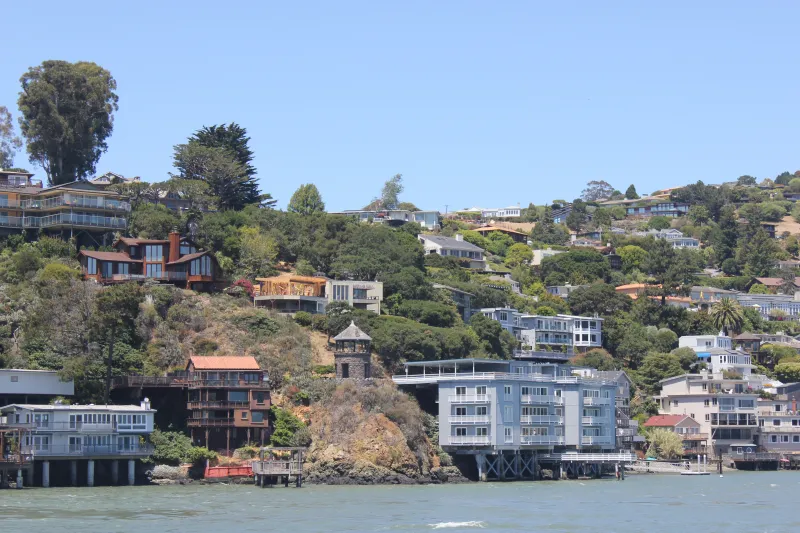Mature trees at the WUI
Definition of Wildland Urban Interface (WUI)
A wildland–urban interface (or WUI) refers to the transition zone between vegetated areas (unoccupied areas) and the human built environment (developed areas). Communities that are within 0.5 miles of the zone may also be considered part of the WUI. As the urban fringe expands into surrounding areas, this intermixed region is a place where human built structures and flammable vegetation come together (WUI Fact Sheet, 2013). Therefore, the WUI is a wildfire-prone environment, vulnerable to high severity fires.
In recent decades, an increasing number of people are moving into woodland settings, in or near forested areas, rural areas, or remote mountain sites (FEMA). Between 1970 and 2000, in the western states the territory at the WUI rose by more than 60% (Ager, n.d). According to the 2012 US Census, there are over 46 million homes at the WUI, with future projections estimating an increase to 54 million (WUI Fact Sheet, 2013).
To prevent the risk of wildfire, fuel reduction efforts at the WUI are implemented across jurisdictional boundaries, and include fuel breaks, thinning, pruning, landscape modifications (National Park Service). Fire management strategies include assessing risk for communities, funding fuel reduction programs based on priority, and evaluating the efficiency of fuel treatments (Ager, n.d). However, land managers are often faced with having to meet sometimes conflicting objectives such as: protecting ecological values (oldgrowth forests), protecting the WUI from fire risk by reducing hazardous fuels, and meeting forest restoration goals (Ager, n.d). Meeting forest restoration objectives while engaging in fuel reduction measures is a challenge, since fuel treatment in the WUI may also result in substantial wildfire-caused mortality of large trees in the surrounding forest (Ager, n.d). Wildfire simulation models are often used to better understand the complex interaction between forest management strategies, fuel treatments, and fire hazard at the WUI. An approach based on designing fire treatments at a landscape scale (while including the topographical characteristics of the area, the distribution of fuels, and local weather), is thought to minimize wildfire threat to communities located at the WUI, and preserve critical forest resources (Ager, n.d).
Existing resources: Numerous resources have been designed to manage wildfire threat at the WUI.
The Center for Fire Research and Outreach (part of University of California Division of Agriculture and Natural Resources), designed a Fire Information Toolkit that provides useful resources for Researchers, Homeowners, and Community Leaders.
The Wildland Urban Interface (WUI) toolkit offers information pertaining to: assessment, outreach, planning, training, codes and standards, and existing relevant research, to help communities located at the edge of the urban fringe to cope with the risk of catastrophic wildfires.

